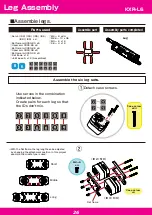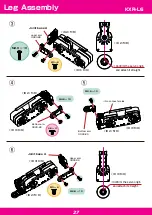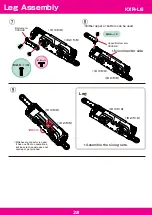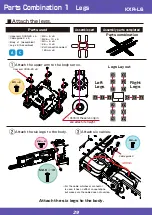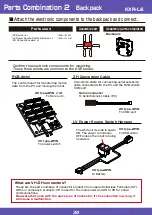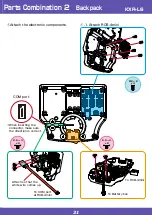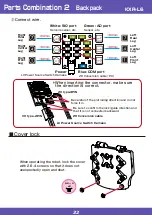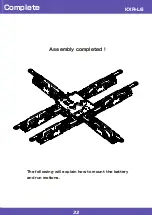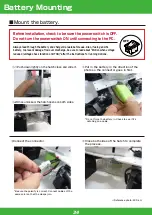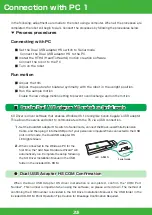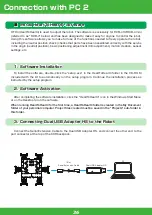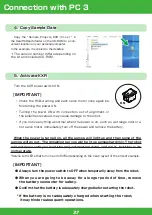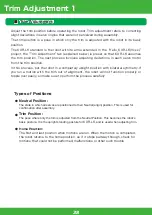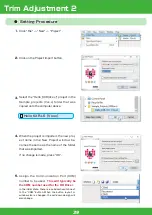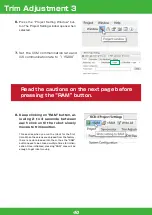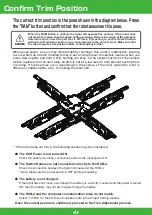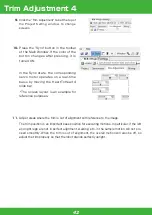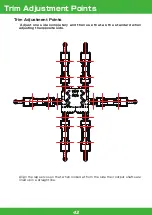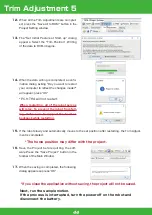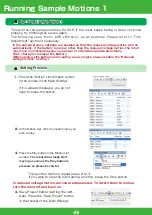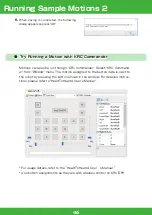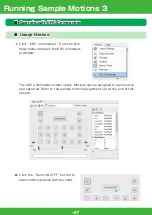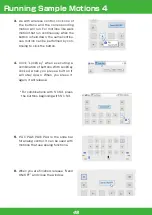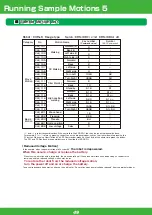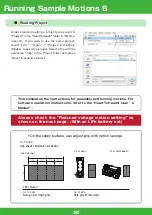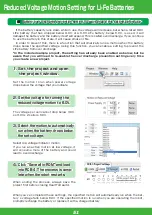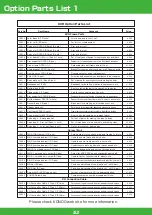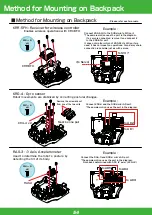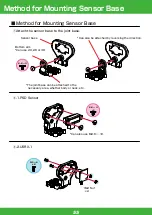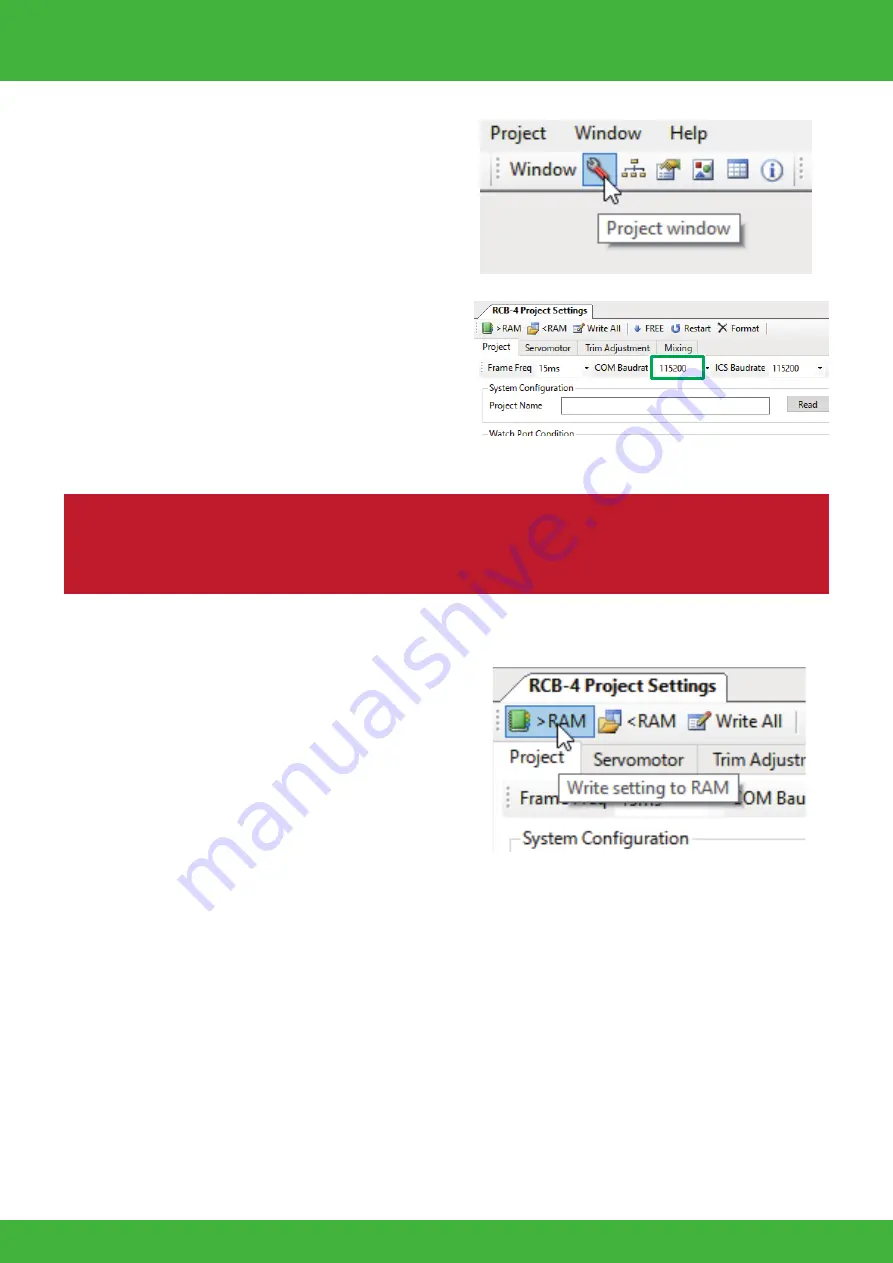
40
7. Set the COM communication rate and
ICS communication rate to 115200 .
Read the cautions on the next page before
pressing the RAM button.
This applies when you run the robot for the first
time. When the servos are shipped from the factory,
there is no data loaded into them, thus the "RAM"
button needs to be clicked multiple times for initiali-
sation. Once initialised, pressing "RAM" once will be
enough to get robot moving.
8. Keep clicking on "RAM" button, al-
lowing 2 to 3 seconds between
each click until the robot slowly
moves to trim position.
6.
Press the “Project Setting Window" but-
ton.The Project Setting window opens when
selected.
* If the robot does not move, the following causes may be considered.
●
The KXR Power is not turned ON.
Check the battery mounting, connections and turn the robot power ON.
●
The Switch Harness is not connected correctly to the RCB-4.
Check the connection between the Switch Harness and the RCB-4.
* Note: Make sure the power switch is OFF before proceeding.
●
The battery is not charged.
If the robot does not move, even though the battery is correctly mounted and the power is turned
ON, then the battery may not be charged. Charge the battery.
●
The RCB-4 and the computer communication rates do not match.
Select "115200" for the COM communication rate in the Project Setting window.
Once the correct posture is confirmed, proceed to the Trim Adjustment process.
When the RAM button is clicked, the robot will assume this posture. If the robot does
not match this pose, then the origin setting is wrong. Retrace the origin setting steps to
determine and correct the part that is off track. Proceeding to set the Home Position
without confirming this posture can cause damage to the servo motors. Make sure that
the robot assumes this posture before continuing any further.
When given power, a servo may vibrate slightly (hunting); this is not a malfunction. Hunting
occurs when the stretch (holding force) is set at a high level to maintain neutral; when you
press down lightly and hold it still, hunting will stop. In the upright position of the sample
motion registered in the next step, stretch is set at a low level to help prevent hunting from
occurring. If hunting does occur depending on the posture of the robot (when the robot is
lifted up or shaken lightly, etc.), try holding the robot still.
The correct trim position is the pose shown in the diagram below. Press
the RAM button and confirm that the robot assumes this pose.
DANGER
Trim Adjustment 3
Summary of Contents for KXR-L6
Page 56: ......

